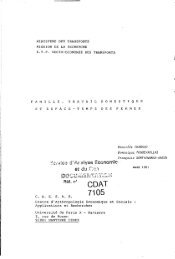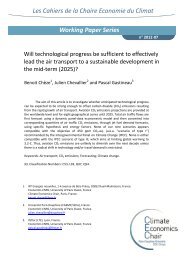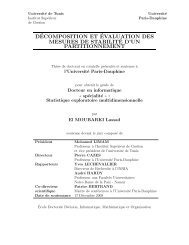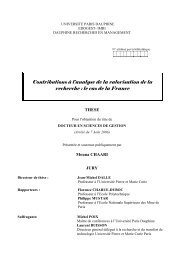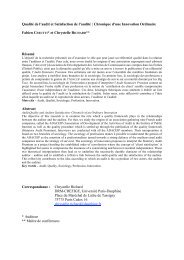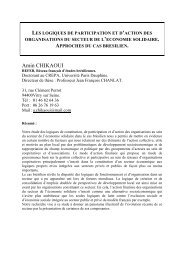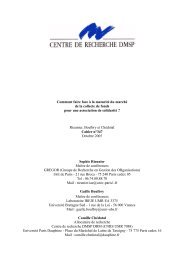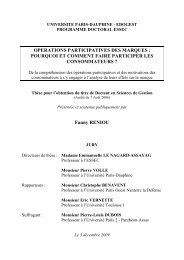Delphine LAUTIER and Alain GALLI Delphine LAUTIER(*) is ...
Delphine LAUTIER and Alain GALLI Delphine LAUTIER(*) is ...
Delphine LAUTIER and Alain GALLI Delphine LAUTIER(*) is ...
Create successful ePaper yourself
Turn your PDF publications into a flip-book with our unique Google optimized e-Paper software.
Firstly, in 1998, the model <strong>is</strong> more prec<strong>is</strong>e with the extended filter. However, in<br />
2001-2002, the simple filter gives again the best performances. Secondly, the model<br />
performances decrease strongly when the database <strong>is</strong> exp<strong>and</strong>ed. The RMSE <strong>and</strong> the MPE<br />
r<strong>is</strong>e dramatically for the two periods. Th<strong>is</strong> phenomenon <strong>is</strong> particularly pronounced when<br />
the futures prices are volatile, during 2001-2002, <strong>and</strong> it will probably be even more<br />
marked as the database <strong>is</strong> increased. So, there <strong>is</strong> a strong incentive to recalculate the<br />
optimal parameters each time the model <strong>is</strong> used. Th<strong>is</strong> <strong>is</strong> not a major drawback, at least<br />
when there <strong>is</strong> an analytical solution for the model, because the estimation process <strong>is</strong> very<br />
fast.<br />
Simulations<br />
The last results presented are simulations showing how the choice of the system<br />
matrix H, which represents the errors in the measurement equation, affects the model<br />
performances. The first results presented in Table 8 (observations) are obtained with a<br />
matrix whose components are the variances <strong>and</strong> the covariance of the observations. Th<strong>is</strong><br />
method <strong>is</strong> the most frequently used. The other performances (simulations) are carried out<br />
with artificially lowered matrices: in simulations 1 to 4, H was multiplied by (1/2), (1/16),<br />
(1/160), <strong>and</strong> (1/1600). For these tests, we retained the period 1998-2001 because it <strong>is</strong><br />
characterized by especially volatile data.<br />
Table 8 illustrates that, when the matrix components are lowered, the model<br />
performances improve strongly: from the initial performances to the fourth simulation,<br />
the RMSE <strong>is</strong> almost divided by two. However, comparing the third <strong>and</strong> the fourth<br />
simulation also shows that there <strong>is</strong> a limit to the improvement. Figure 3 summarizes the<br />
main results of these simulations.<br />
V. CONCLUSION<br />
16



